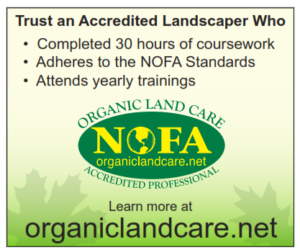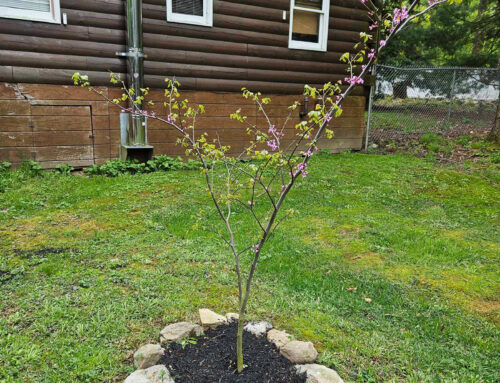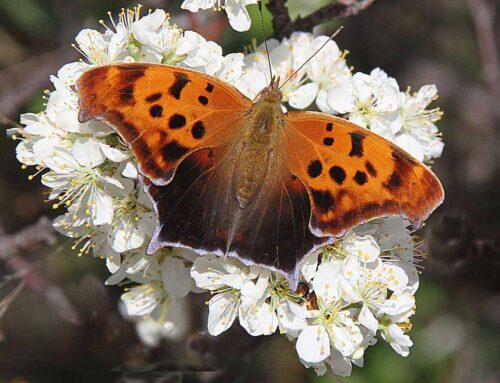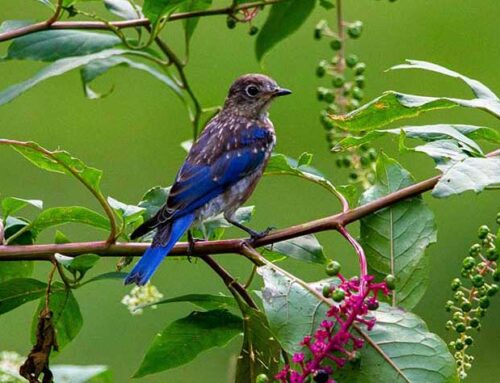Overseeding Lawns
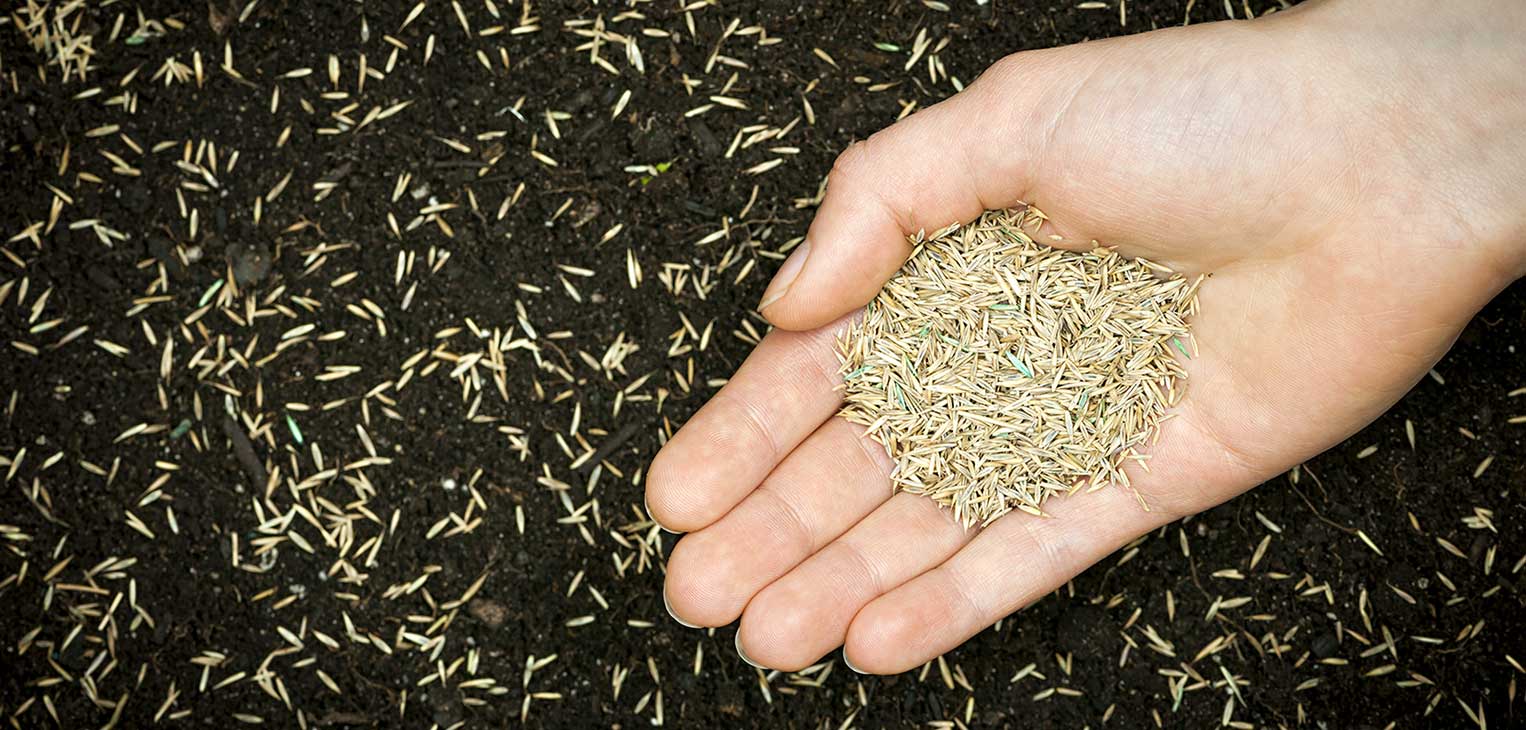
Organic Turf Management
Introducing new grass to your lawn every year will keep your turf looking thick, green and healthy. Regardless of whether grass has died off during the hot summer months or bare spots from lawn mower wheels have gouged some ruts in areas, overseeding your lawn is always a great idea. The best time to overseed cool-season lawns is the fall. The warm soil temps from summer coupled with cooler daytime and nighttime temperatures makes the perfect environment for new grass seeds to germinate and thrive.
Overseeding a lawn means planting grass seed directly into your existing grass. It helps prevent weeds from taking over your lawn and promotes healthier growth. One of the most important things to consider for overseeding is timing. Additionally, proper overseeding depends on the type of grass that grows best in your climate. Kentucky bluegrass, perennial ryegrass and fescue are cool season grasses. Overseeding a lawn in fall is ideal if you’re growing cool season grasses. That’s because the soil is still warm enough for seeds to germinate and the cool air helps grass to grow a strong root system. Cool fall weather starts earlier in the North, so it’s recommended to overseed cool season grass by late summer or early fall.
Within the scope of the video below of organic lawn maintenance at a residential home, we are overseeding the same to promote new growth, following that up with a top dressing with rich organic compost which will increase the organic matter by adding bacteria and fungi. A well-planned organic lawn has healthy soil and deep-rooted healthy grass able to withstand most local conditions and robust enough to crowd out weeds and to shrug off the occasional pest.
Considering a transition to an organic lawn? Consider this – If your lawn is currently chemically‐dependent, initially it may be more expensive to restore the biological life. But, in the long term, it will actually cost you less money. Once established, an organic lawn uses fewer materials, such as water and fertilizers, and requires less labor for mowing and maintenance. The key to a healthy lawn is healthy soil and good mowing, watering and fertilizing practices. Healthy soil contains high organic content and is teeming with biological life. Healthy soil supports the development of healthy grass that is naturally resistant to weeds and pests. In a healthy, fertile and well maintained lawn, diseases and pest problems are rare. More importantly, your lawn will be safe for children, pets and your local drinking water supply.
Your lawn may be small, but the cumulative impact of pesticides, chemical fertilizers, and water use on all the lawns across North America is huge. If you don’t use chemicals on your lawn, they can’t run off and hurt the wild lands or water sources near you, nor can they harm you, your family, or your neighbors.
Prep your lawn for overseeding by de-thatching it. Thatch is a spongy layer made up of dead grass blades, stems and roots mixing with living plant parts. A thick layer of thatch can lead to disease and insect problems if you don’t remove it. It can also keep grass seeds from germinating.
1 – Mow your lawn so that the grass sits above the soil line. Ideally, the grass blades should be no more than 1 to 1 1/2 inches high. This will let the new grass seed get enough sunlight and make good contact with the soil.
2 – Use a dethatcher or power rake to dethatch or remove any thatch you find. To dethatch, rake your lawn in one direction. Give it another pass in the opposite direction. The tines on the rake will pull up the thatch along the way. Be sure to remove the thatch off the lawn.
3 – Aerating your lawn loosens the soil so air and water can reach the roots. It also combs out your grass and kicks out debris. Aerating your lawn will help grass seed grow faster and better. It’s especially important to aerate lawns that are compacted by heavy foot traffic. To aerate a lawn, move a core aerator across the yard in straight lines. Cover the entire yard. Do a second pass perpendicular to the first one, if needed. The core aerator should pull up plugs of soil instead of just punching holes in the ground. This helps break up the compaction. Leave the plugs on the ground and they’ll disintegrate in a couple of weeks.
Reseeding lawns can also help with any bare spots in your grass. To reseed your lawn, fill in bare spots with topsoil before you overseed. This improves the quality of the soil and helps the grass grow. Some bald spots are in areas with water drainage problems. Add a thin layer of sand first and smooth it out with a rake. Sand helps the grass seed germinate faster and develop a good root system.
Spread your grass seeds evenly around the lawn. Use a broadcast spreader, drop spreader or handheld spreader. Lightly water your lawn immediately after overseeding. After that, water lightly every day to keep the soil moist while the new grass establishes.
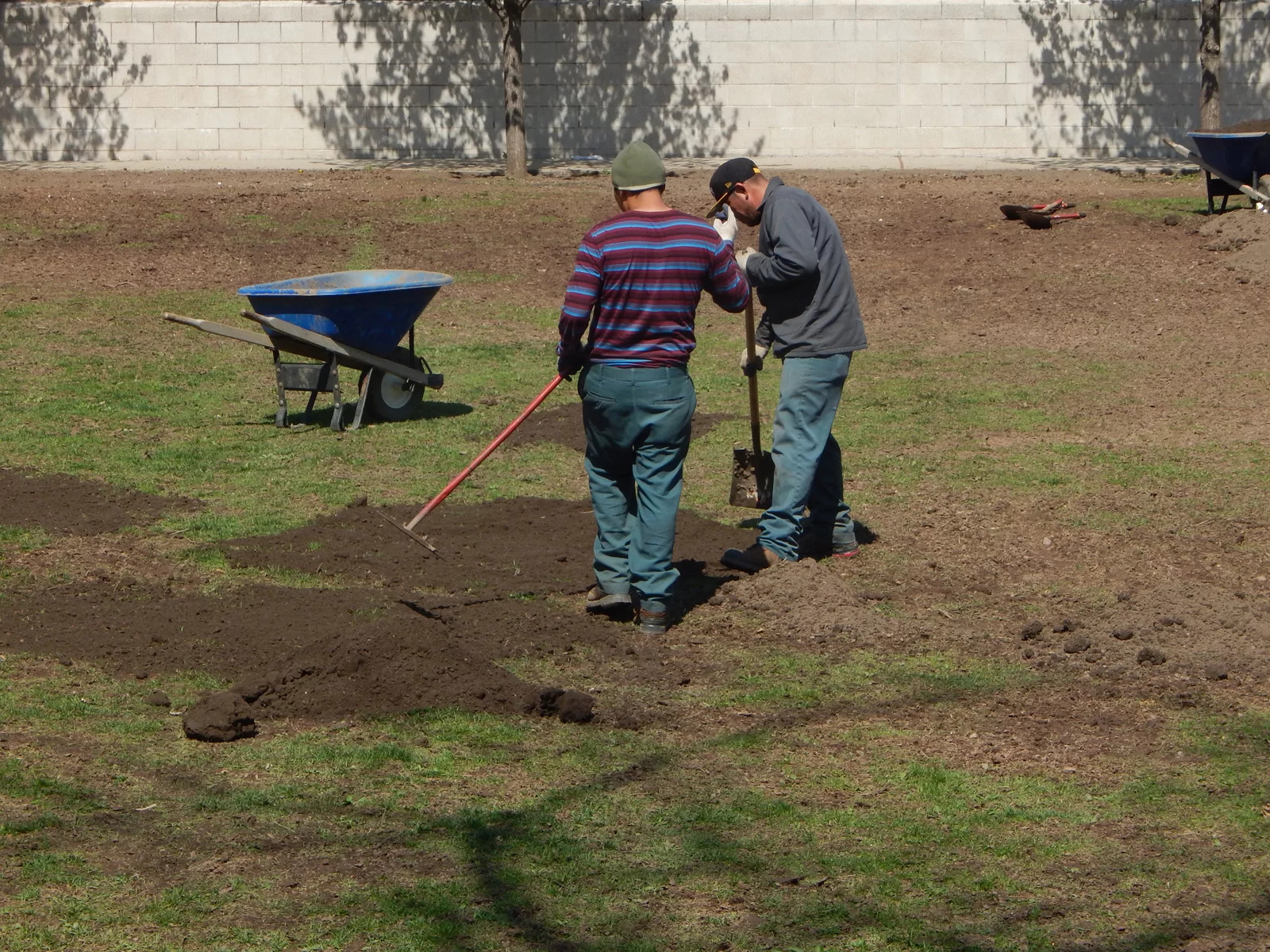
Continue watering every day until the new grass is as tall as the established grass. Always water in the morning, before 10 a.m., to keep the water from evaporating in the heat of the sun. Watch for signs of overwatering, such as puddles or spongy soil. If you notice these signs, cut back on the watering immediately. Keep mowing the grass to two inches tall for the rest of the season. Always wait until the grass is dry before you mow. Try to minimize traffic on the overseeded areas until the new grass has grown 1 – 2 inches tall.
At Lincoln Landscaping cultivating the environment is our life and livelihood. It is our number one goal to help our clients create and maintain beautiful landscapes while reducing the impact on the environment. Whether you are interested in a pollinator landscape garden design and build, organic turf management or other landscaping or property maintenance; we can create for you an environmentally friendly, organic and beautiful property. We create eco-systems.
Yua Tah Hey
(A traditional greeting in Navajo, often spelled yá át tééh, which translates generally as “it is good.”)
Lincoln Landscaping “The Natural Choice”
Mike Kolenut President & CEO
https://lincolnlandscapinginc.com
(201) 848-9699

